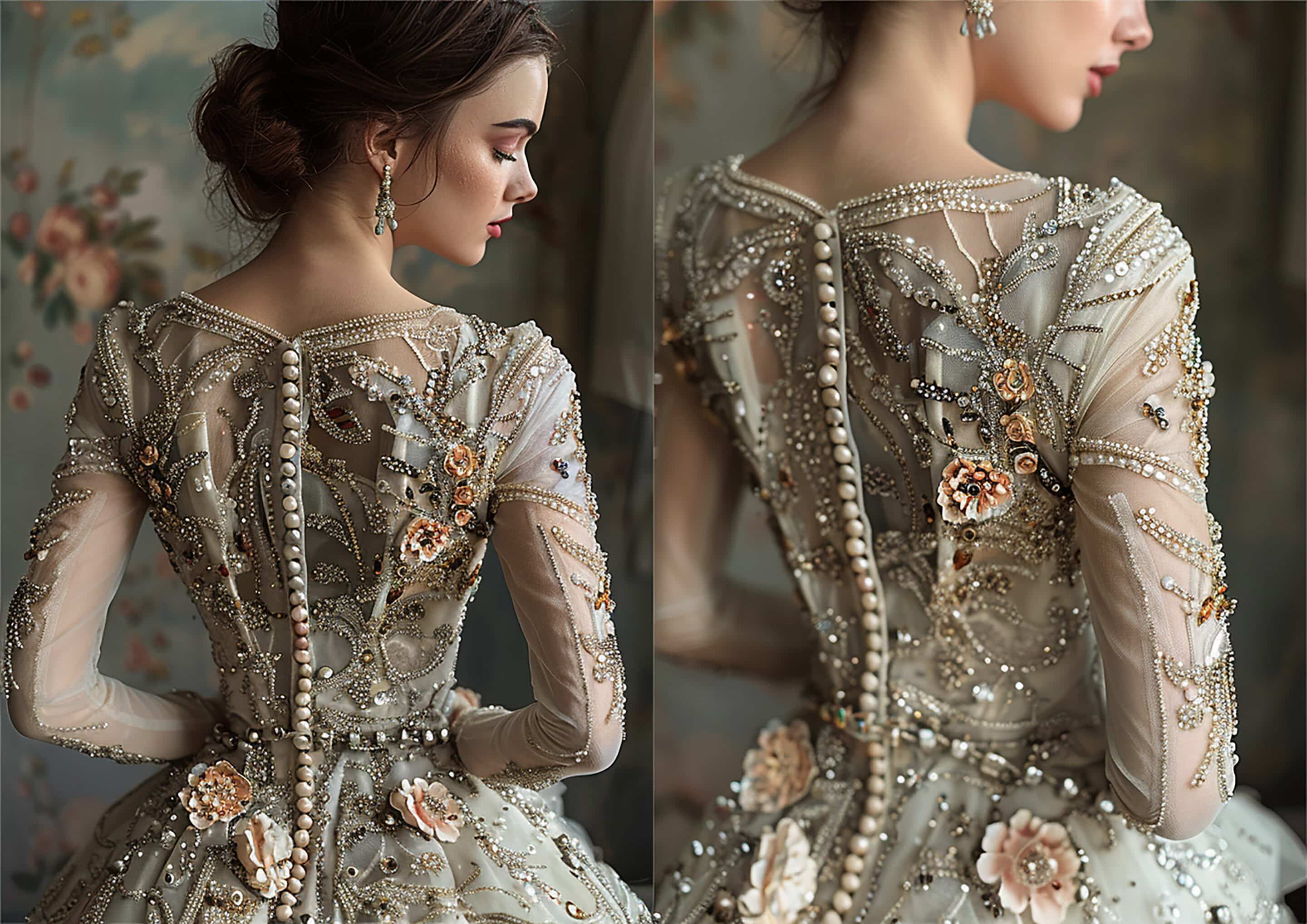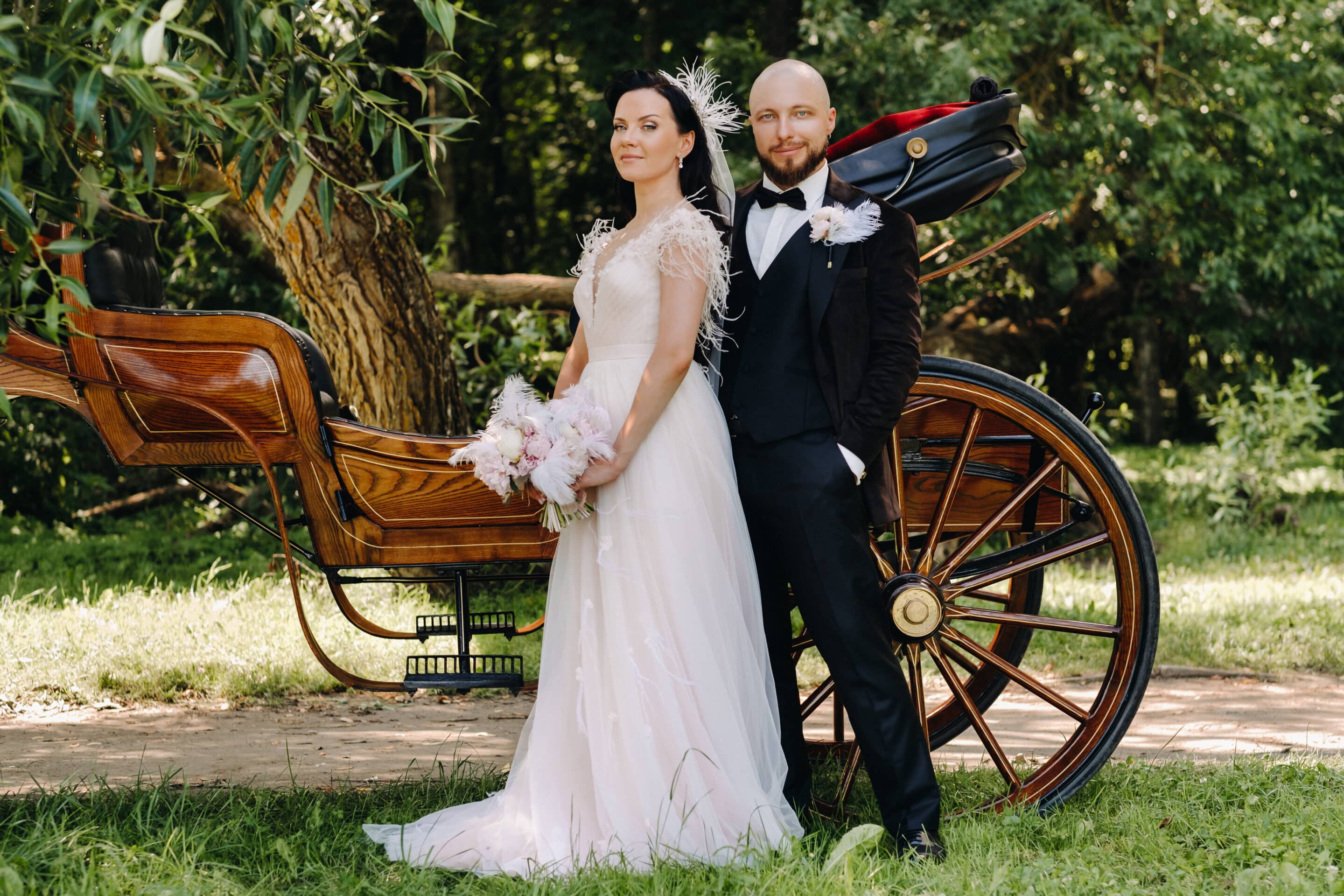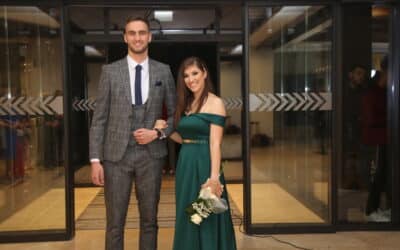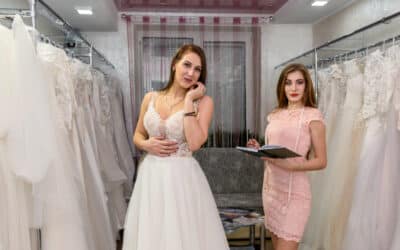Wedding gowns in Naperville have undergone significant evolution over the decades, reflecting global fashion trends, local traditions, and cultural influences. From the practical dresses of early settlers to the glamorous designer gowns of today, the history of bridal fashion in Naperville tells a fascinating story of style, culture, and love.
Early Wedding Dress Traditions in Naperville
In the 1800s, weddings in Naperville were simple community events. Brides didn’t usually buy gowns just for the ceremony. Instead, they wore their best dress, which could be worn again for church or formal occasions.
These gowns were often made from durable fabrics in dark shades —such as brown, navy, or burgundy —chosen for their practicality. Immigrant families added their own traditions. Irish brides often favored blue dresses, while German families frequently wore black gowns for both weddings and formal events.
Italian brides, on the other hand, preferred red or gold to symbolize joy and prosperity. These cultural influences helped shape the early look of Naperville weddings long before white became the standard.
Everyday Dresses for Weddings
- Dresses were usually made of brown, navy, or burgundy fabrics.
- Practicality mattered—these gowns were later reused for church or formal gatherings.
- Expensive fabrics, such as silk or lace, were rare outside wealthy families.
Influence of Immigrant Families
Irish, German, and Italian settlers brought colorful wedding traditions:
- Irish brides leaned toward blue dresses.
- German brides often wore black or darker colors.
- Italian brides preferred rich reds and gold accents.
Hand-Me-Down Gowns
Family heirlooms were treasured. Mothers passed gowns to daughters, often tailoring them to fit. These dresses symbolized continuity and tradition in Naperville’s growing community.
The Arrival of White Wedding Gowns
The arrival of white gowns in Naperville followed international fashion trends. After Queen Victoria’s famous 1840 wedding, white dresses became symbols of elegance and purity. Wealthier Naperville brides began to adopt white silk or lace gowns in the late 19th century.
At the same time, local brides were increasingly influenced by Chicago’s department stores, which promoted white dresses as the “ideal” choice for brides. While working-class families still preferred darker dresses for practicality, the white gown trend slowly spread into Naperville households, becoming the dominant style by the early 20th century. Today, many brides who wear family gowns rely on gown restoration services to preserve these historic dresses.
White as a Symbol of Purity
White gowns came to represent purity, wealth, and refinement. They were popular among wealthier Naperville families by the late 19th century.
Role of Chicago Department Stores
As Naperville’s access to Chicago markets expanded, local brides were introduced to fashionable white gowns displayed in department stores.
Transition Among Working-Class Families
It took decades for all brides to adopt white gowns. Many people continued to wear darker colors until the early 1900s.
Victorian Influence on Naperville Brides
The Victorian era reshaped bridal fashion worldwide, and its influence extended to Naperville as well. Brides who wanted to reflect status and elegance often imitated Victorian designs, even decades after the era ended.
Victorian-inspired gowns were characterized by their tight bodices, full skirts, and intricate lace detailing. While not every bride could afford imported lace or silk, many used local seamstresses to recreate the look with affordable fabrics.
Standard Victorian Features in Naperville Gowns:
- High necklines with lace trim
- Full skirts supported by petticoats
- Long sleeves for modesty
- Embroidered veils and gloves
20th Century Wedding Gown Styles in Naperville
The 20th century marked the full adoption of white as the bridal standard in Naperville, though trends shifted every decade.
The 1920s: Flapper Influence
- Shorter hemlines and dropped waists became popular.
- Beading and fringe reflected the spirit of the Jazz Age.
- Brides often wore cloche hats instead of long veils.
The 1940s: War-Time Simplicity
- Rationing of fabric during World War II led to the creation of simple, yet elegant, gowns.
- Some brides even wore tailored suits instead of dresses.
- Accessories like small veils and gloves became prominent.
The 1950s: Hollywood Glamour
- Inspired by Grace Kelly and Audrey Hepburn.
- Full skirts, lace details, and dramatic veils became the norm.
- Churches in Naperville often saw brides in ballgown silhouettes.
The 1980s: Bold & Extravagant
- Puffy sleeves, tulle skirts, and large veils defined the era.
- Princess Diana’s wedding dress inspired brides in Naperville.
The 2000s–Present: Diversity in Styles
- Brides often opt for slim silhouettes, lace overlays, and modern, minimalist designs.
- Colored gowns (champagne, blush, or even floral) are gaining popularity.
Wedding Dress Colors in Immigrant Communities
Even as white became dominant, cultural traditions remained strong in Naperville.
Irish Wedding Dresses
Blue remained a beloved choice, symbolizing devotion and sincerity.
Italian Wedding Gowns
Red and gold dresses represented joy and prosperity, often paired with ornate jewelry.
Scandinavian Influence
Black gowns were a common choice among Scandinavian brides, selected for their elegance and practicality.
In some cases, brides blended traditions—wearing a white gown for the ceremony and a colorful one for the reception. These practices demonstrate how Naperville’s diversity helped preserve color in wedding fashion long after white became the dominant choice.
The Great Depression and Wedding Gowns
The economic hardships of the 1930s forced many Naperville brides to rethink their wedding attire. Buying a gown solely for one day was often unrealistic, so creativity became essential to the process. Instead of elaborate dresses, many brides wore simple white or pastel gowns that could be worn again.
Others repurposed dresses they already owned, sometimes dyeing them after the ceremony for continued use.
Depression-Era Gown Practices:
- Plain fabrics, such as rayon or cotton, were commonly used.
- Brides often borrowed gowns from relatives.
- Accessories such as veils, hats, or gloves were used to “dress up” a simple outfit.
Hollywood’s Impact on Naperville Bridal Fashion
By the mid-20th century, Hollywood became one of the strongest influences on Naperville brides. Stars like Grace Kelly and Audrey Hepburn inspired entire generations with their iconic wedding looks. Movies and magazines featured glamorous white gowns with lace, pearls, and dramatic silhouettes, creating trends that quickly spread to suburban communities like Naperville.
Local brides wanted the same elegance they saw on screen, leading to the rise of bridal boutiques that could replicate celebrity styles.
Hollywood-Inspired Trends:
- Grace Kelly’s lace-sleeved gown (1956) → Inspired romantic lace dresses.
- Audrey Hepburn’s tea-length gown (1954) → Popularized shorter hemlines.
- Princess Diana’s gown (1981) → Sparked the era of oversized sleeves and long trains.
Preservation of Historic Wedding Dresses
Many historic gowns from Naperville families are treasured heirlooms. But preserving them isn’t easy. Fabrics like silk and lace can yellow or weaken with time, while dark dyes from the 1800s may fade. Today, professional wedding dress cleaning and gown preservation services help families keep these dresses intact.
Restoration experts can repair beadwork, clean delicate fabrics, and safely store gowns so they last for generations.
Challenges of Preserving Old Gowns
- Fabrics like silk and satin fade to a yellowish hue over time.
- Dark dyes from the 1800s can fade if not stored properly.
- Lace and beadwork are fragile and need expert care.
Modern Preservation Services
Today, brides utilize professional wedding dress cleaning and gown preservation services to ensure their dresses remain in pristine condition for future generations.
Family Heirlooms in Naperville
Some families proudly preserve dresses that are over 100 years old, connecting present-day brides to their heritage.
Fashion Influence of Chicago on Naperville Brides
Naperville’s proximity to Chicago has always played a role in bridal fashion. In the early 20th century, many brides traveled to Chicago to purchase gowns from downtown department stores. These stores showcased the latest national and European styles, making them highly desirable.
Later, suburban boutiques in Naperville began offering custom gowns, enabling local brides to enjoy high-fashion trends without leaving town. Today, with Chicago’s bridal markets and Naperville’s own boutiques, brides can choose from a wide variety of styles that combine tradition, culture, and personal flair.
Downtown Bridal Shops
By the early 20th century, many Naperville brides traveled to Chicago for exclusive fabrics and designer gowns.
The Rise of Suburban Boutiques
Later, local boutiques in Naperville began offering customized dresses, making high-fashion trends more accessible to the public.
Hollywood’s Impact on Naperville Bridal Fashion
By the mid-20th century, Hollywood became one of the strongest influences on Naperville brides. Stars like Grace Kelly and Audrey Hepburn inspired entire generations with their iconic wedding looks.
Movies and magazines featured glamorous white gowns with lace, pearls, and dramatic silhouettes, creating trends that quickly spread to suburban communities like Naperville. Local brides wanted the same elegance they saw on screen, leading to the rise of bridal boutiques that could replicate celebrity styles.
Hollywood-Inspired Trends:
- Grace Kelly’s lace-sleeved gown (1956) → Inspired romantic lace dresses.
- Audrey Hepburn’s tea-length gown (1954) → Popularized shorter hemlines.
- Princess Diana’s gown (1981) → Sparked the era of oversized sleeves and long trains.
Visit For More Information:
What is a christening gown shadow box in Chicago?
What Does a White Wedding Dress Symbolize?
What to Do with My 30-Year-Old Wedding Dress in Chicago?
Information on Wedding Dress History:
For a deeper look into the global evolution of wedding gowns, visit Brides.com’s guide to wedding dress history.
FAQs
What did early Naperville brides wear?
They wore their best dress, usually in dark colors like brown or navy, instead of a special white gown.
When did white dresses become common in Naperville?
In the late 19th and early 20th centuries, it was influenced by Queen Victoria and the Chicago fashion market.
Did immigrant communities wear white?
Not right away. Many kept colorful traditions alive for decades.
What trends were popular in the 1920s?
Shorter hemlines, beading, and cloche hats dominated the bridal fashion scene.
How did WWII affect bridal fashion?
Fabric shortages led to simple gowns or even wedding suits.
What were the 1950s styles?
Lace gowns with full skirts and dramatic veils, inspired by the glamour of Hollywood stars.
Were black gowns really worn?
Yes, especially in Scandinavian families, for practicality and formality.
Do Naperville brides still wear colored gowns?
Yes, modern brides experiment with champagne, blush, and even floral gowns.
Can historic gowns still be preserved?
Yes, with professional preservation services, even gowns from the 1800s can be restored to their original condition.
Where can Naperville brides preserve gowns today?
They can rely on local gown preservation services for long-term care.






